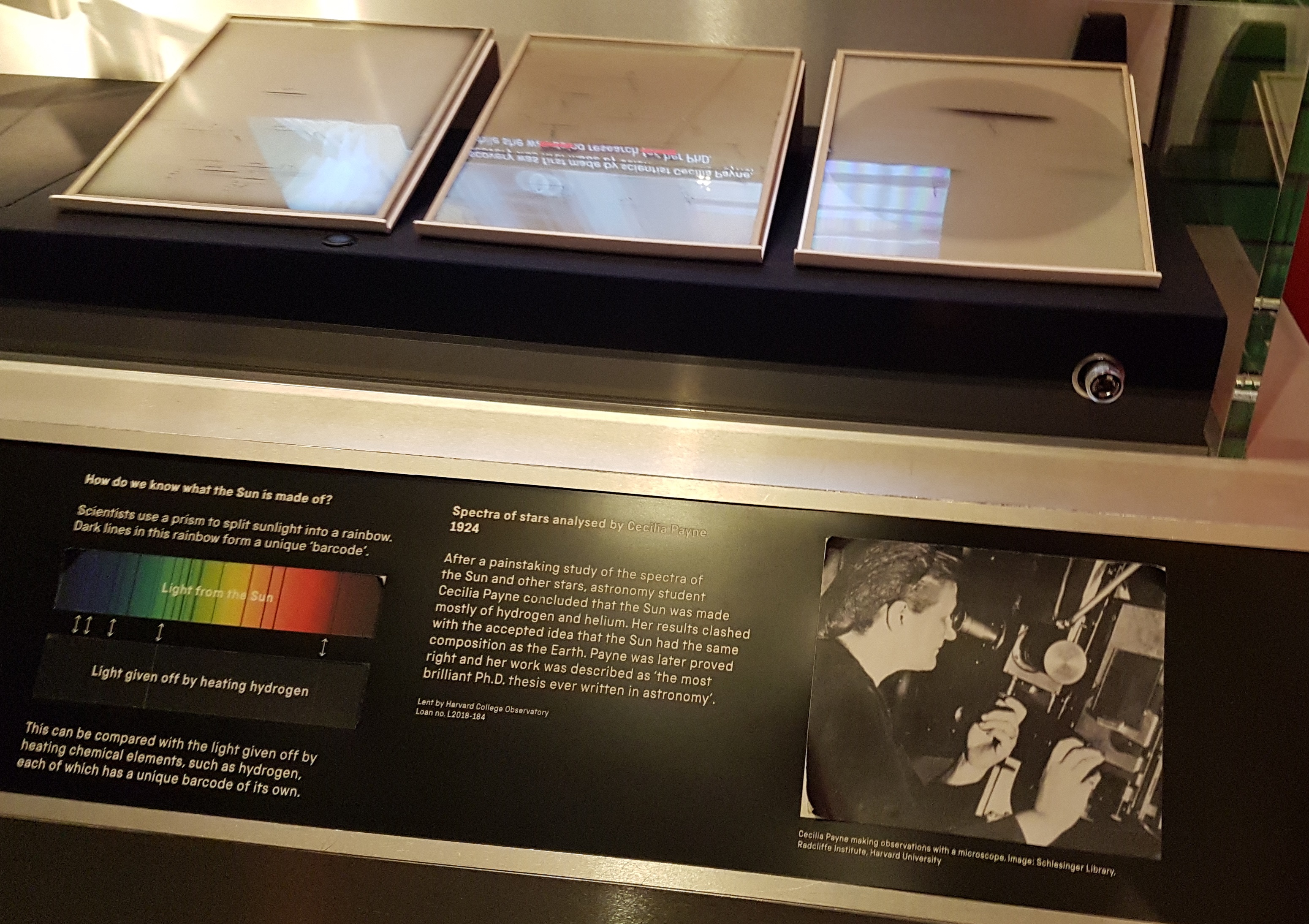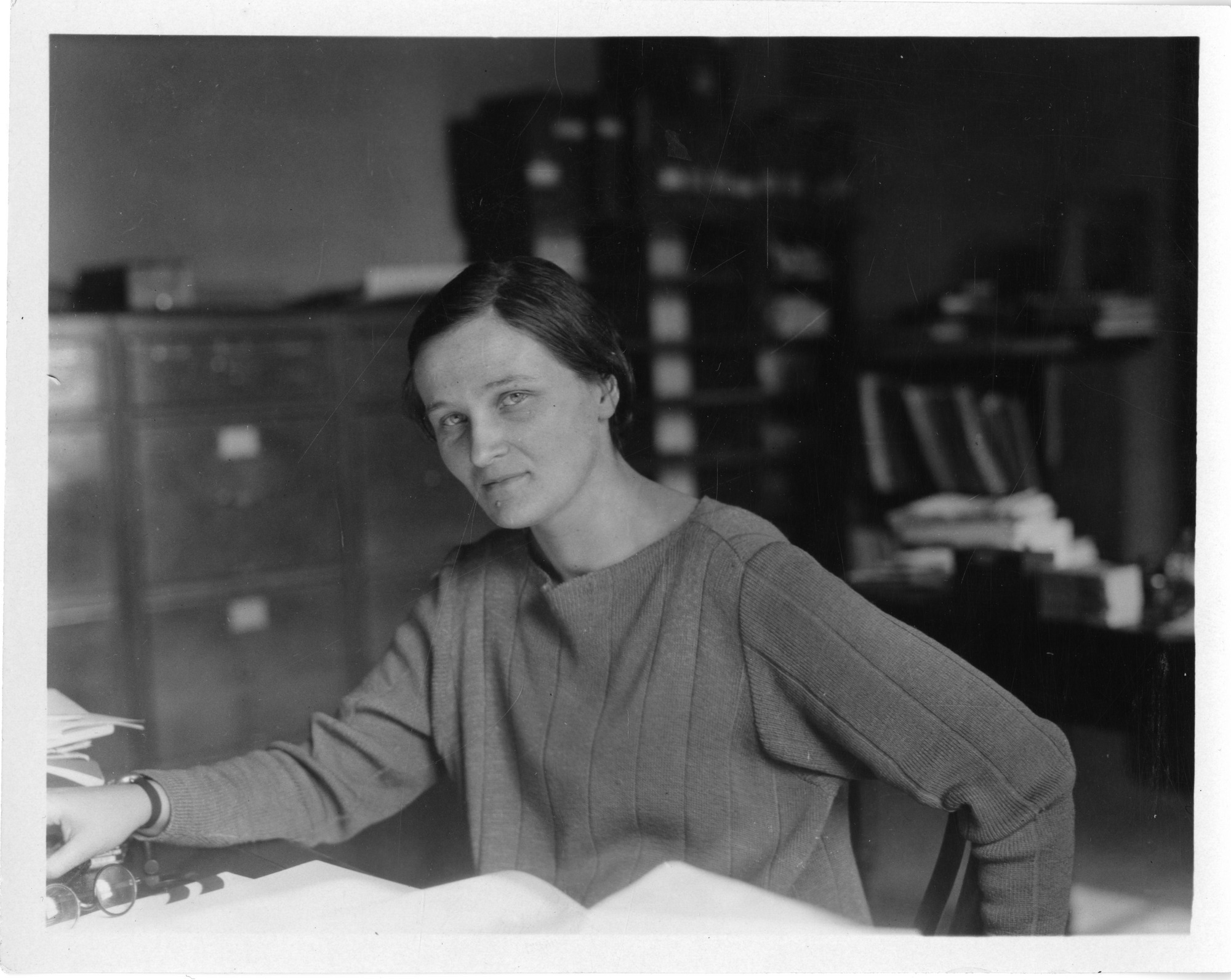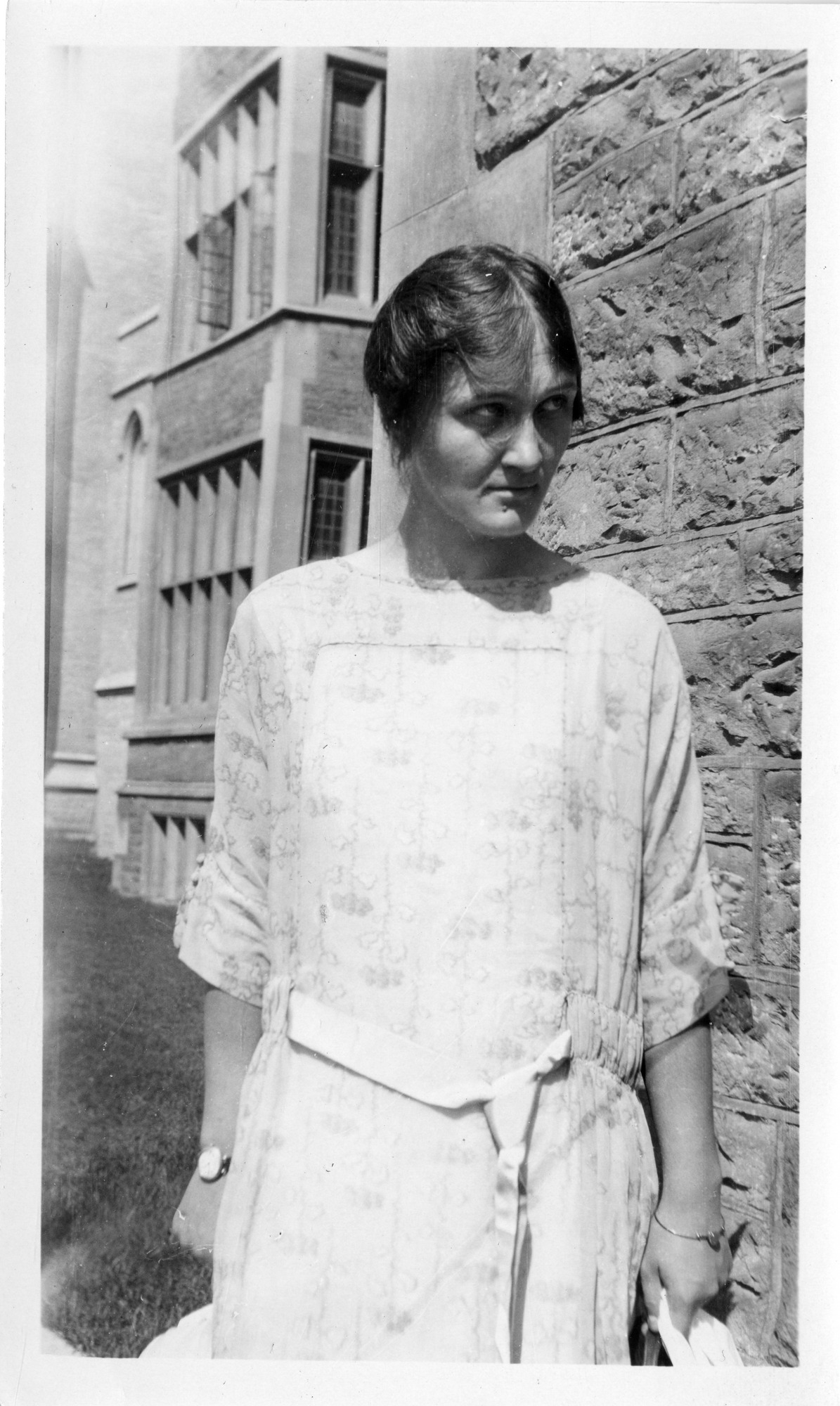A remarkable scientist who changed our understanding of the Sun, Cecilia Payne (1900-1979) defeated a misogynistic society to become Harvard’s first female Head of Department.
Cecilia and the Sun
In the early 1920s Payne completed her studies at Cambridge University, UK, but was not awarded a degree due to her sex. Whilst she was there, she decided to pursue a career in astronomy. Opportunities for women in scientific academia were almost non-existent in England, so she decided to move to Harvard, USA.
In 1925, Payne completed her PhD at Harvard College Observatory for her work on the temperatures of stars and their chemical make up. During her research she discovered that the Sun was mostly made of hydrogen and helium.
However, this result conflicted with current understanding which stated that the Sun had a similar chemical make-up to the Earth. As such, she was persuaded to reject her findings by Henry Norris Russell, a leading astronomer of the day. He declared her results to be ‘clearly impossible’, although he admitted that her doctoral dissertation was the best he had ever read. In fact, it was so good that it was published as a book, Stellar Atmospheres!
In 1929, Payne was proved right by Russell himself who finally agreed with her results and cited her study – although he made no mention to his earlier disbelief.

Cecilia’s career
In 1927 Payne became a fully-fledged Astronomer working at Harvard Observatory. She instructed graduate students and supervised doctoral research but was still denied an academic position, in spite of the fact that the Director of the Observatory, Harlow Shapley, believed she deserved one. This was due to the misogynistic views of the Harvard President, Abbott Lowell, who refused to appoint her and swore that she would never ascend to a Harvard professorship while he was still alive.
In 1938, under the leadership of a new President, Payne was finally recognised as an officer of Harvard, as the Philips Astronomer, although she was still denied the position of Professor even though she was more than qualified. Indeed, Shapley had needed to reassure Harvard that conferring the Philips Astronomer title on a woman would not make her a member of the college faculty.
Finally, in the late 1950s Cecilia Payne became a full professor and Chair of the Department of Astronomy – the first woman at Harvard to achieve this level of success and become a Head of Department. She celebrated by sending handwritten letters to all the female astronomy students and inviting them to a party in the Observatory Library. However, despite this success Payne was still paid less than her male equivalents across Harvard. A gender pay gap issue that still exists today.

Cecilia’s husband
In 1933, Payne and her future-husband Sergei Gaposchkin met each other for the first time in Germany. He had travelled 150 miles on a bicycle to greet her and ask her for her help. Gaposchkin was one of ten children born to poor parents in the Crimea. He had worked on fishing boats, farms and in factories to finally realise his dream of becoming an astronomer. However due to the political situation at the time and the rise of the Nazis he was under suspicion in Germany of being a Russian spy, and had been denied entry into Russia under suspicion of being a German spy. Payne solved this problematic situation by helping him get a visa to the USA and a position at the Harvard Observatory.
After working together at the Observatory, they fell in love and eloped to New York, where they were married. When the news was announced back in Harvard it was met with some shock as no one knew that a romance had been developing. Some people were particularly outraged by the match due to the fact that Cecilia was taller and earned more than her husband! They went on to have three children together.

Cecilia and today
Cecilia Payne’s work was undeniably important to our understanding of the Sun and astronomy. However, due to her gender she had to work that much harder to fight for the recognition she deserved. Indeed, she described herself as ‘a rebel against the feminine role’ and declared that her real rebellion ‘was against being thought, and treated, as inferior’.
Her career is a sobering reminder that the reason there were not more female scientists in history was not because of a lack of talent or passion, but instead due to the systematic misogyny of society. Women are still under-represented in science today for a variety of reasons but the future is looking sunny. And thanks to Payne we know that the Sun is made up of mostly hydrogen and helium!
This post was written alongside our blockbuster exhibition The Sun: Living With Our Star which featured more about Payne’s contribution to astronomy.